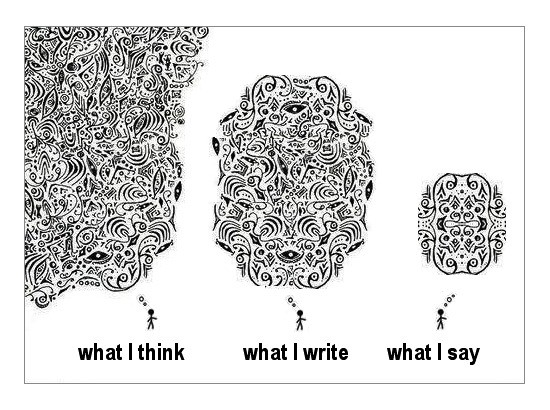“Once we quell our external distractions, we can address the most subtle and powerful distraction of all, the voices inside our heads”
– Jay Shetty
I’m in Ohio visiting my partner’s family for the holidays and surrounded by love. I have never seen a relationship as beautiful as the one between his parents. I look out the kitchen window, into the backyard, and think to myself, “What a beautiful, calm life. This is the kind of life I hope to give my children someday.”
All of a sudden, I feel a wave of anxiety wash over me. I’m scared. But what am I scared of? Commitment? Stability? Or am I afraid of failing? Failing my family, the way (I felt) mine had failed me. Failing myself, the way (I believed) I had failed myself in the past.
I feel another wave wash over me, and this time I hear a voice inside my head say, “run.” I begin to feel myself run. Running away from my thoughts. Running away from my emotions. Running away from the kitchen into the bathroom where no one can see me. I stop and think to myself, “What are you even running from?” The voice slowly creeps back in and rumbles with conviction, “Doesn’t matter. You’re a runner. You’ll always be a runner.” I start to believe the voice. If past trends are the measurement for future projections, then I’m bound to run away from life.
The unwelcome voice interjects to agree, “That’s right. You ran away from home. You ran away from a marriage. You ran away from any chance of having a family. What makes you think you won’t do it again?” The voice gets louder and angrier, “You’ll never be able to commit. YOU’RE NOT GOOD ENOUGH! YOU’VE NEVER BEEN GOOD ENOUGH!! YOU’LL NEVER BE GOOD ENOUGH!!!” Next thing I know I’m panicking, staring at my reflection in the upstairs bathroom mirror.
I leave the bathroom and go back into the bedroom. The room is quiet, but the inner noise smothers the outer silence.
The voice(s) begin to get louder and I think to myself, “Am I crazy?”
CONTROL YOUR MIND, DON’T LET YOUR MIND CONTROL YOU
The voices inside of our heads can be powerful motivators of how we perceive the world around us. From the outside looking in, my life seemed perfect. I had it all: big house, immensely successful career, and an Ivy-League education, but not all that glitter was gold. On the inside, my anxiety was crippling my mental and emotional stability. Anxiety, for me, was an outward representation of my inward turmoil. Having a chaotic childhood left me to perpetually live in a state of anxiety. Desperate to find answers on quelling my anxiety, I leaned into the noise inside my head.

What I came to realize was that my self-talk was hard on me (I call this voice Palveshade — my shadow-self). I(t) would yell at me to do better. To BE better. And when I, inevitably, failed at fulfilling unreasonable expectations for myself, I would yell harder and punish myself. This demanding and controlling self-talk originated in adolescence and became stored as a program in my subconscious. And just as you would expect, it hindered me from doing basic human things in adulthood.
THROWING SHADE AT, MYSELF
The shady parent in me (Palveshade) was constantly yelling at the child in me who kept failing to reach unreasonable expectations. The child in me (Palveshook) was shaken by this demanding and turbulent internal environment –similar to the external environment my parents created for me as a child.
This led me to become an anxious person and prevented me from performing simple tasks like making phone calls.
I used to ask myself, “Why am I so anxious?” My self-talk had an underlying tone of “What’s wrong with me? Why am I this way?”, which led to making myself feel worse and further avoiding the root cause; comparable to a parent screaming at their child to clean their room and yelling, “What’s wrong with you?”, out of frustration. Neither the parent nor the child get what they want, and both are left feeling defeated.
It’s a vicious cycle.
FROM PALVESHOOK TO PALVESHINE
As a first step, what really helped me, was understanding (and believing) that I am not my thoughts or feelings. Pema Chödrön captured this state of Being best, when she said, “I am the sky… everything else… it’s just weather.” Switching my self-talk (the conversations I have with myself in my head) from believing I am anxious to I feel anxious was a gentle reminder that I can control how I feel. It was then, I was able to start asking myself, “Why do I feel anxious?” instead of, “Why am I anxious?”
In making this small distinction, I realized that the answers to, “Why am I anxious?” were vastly different from, “Why do I feel anxious?”
And just like the answers, the results in my behavior were different as well. When my adult voice stopped “throwing shade” at me and began to calmly bargain with my inner child, the child in me went from being resistant, scared and shaken (Palveshook) to cooperative, fearless and bright-eyed (Palveshine).
When I changed my self-talk to ask myself, “Why do I feel this way?”, it was as if a parent gently asked their child, “Why aren’t you cleaning your room?” Upon asking myself this question, it opened up a pathway of communication with myself. Turns out my inner child was a sassy teenager and the only way I could get this hormonal teenager to clean up, was to listen patiently to the answers and bargain with rewards upon completing tasks (i.e., grabbing a handful of chocolate chips from the cupboard and singing “dance it out, dance it out” upon completing this article — a truly shining moment for Palveshine).
It was then that I learned I was feeling anxious about making calls because it took down a barrier and allowed for closer communication with others; this scared me because I didn’t know how to do that — a result of a turbulent upbringing. As it turns out, when important relationships in our lives don’t cultivate an open, communicative environment (like abuse from a parent or partner), then we don’t cultivate that same environment in our minds with ourselves either.
The answer to, “Why am I anxious?”, may be, “I don’t know.” But the answer to, “Why do I feel anxious?”, may be, “because I am scared.” This then allows you to honestly open up to yourself and ask, “Why am I scared?”, and trace to the root of the cause. You might be surprised to find that the root cause of several anxieties may be a single source… and far different from what you might think it is.
For me, differentiating between what I feel, what I think, and what I do is precursory for finding out, who I am.






